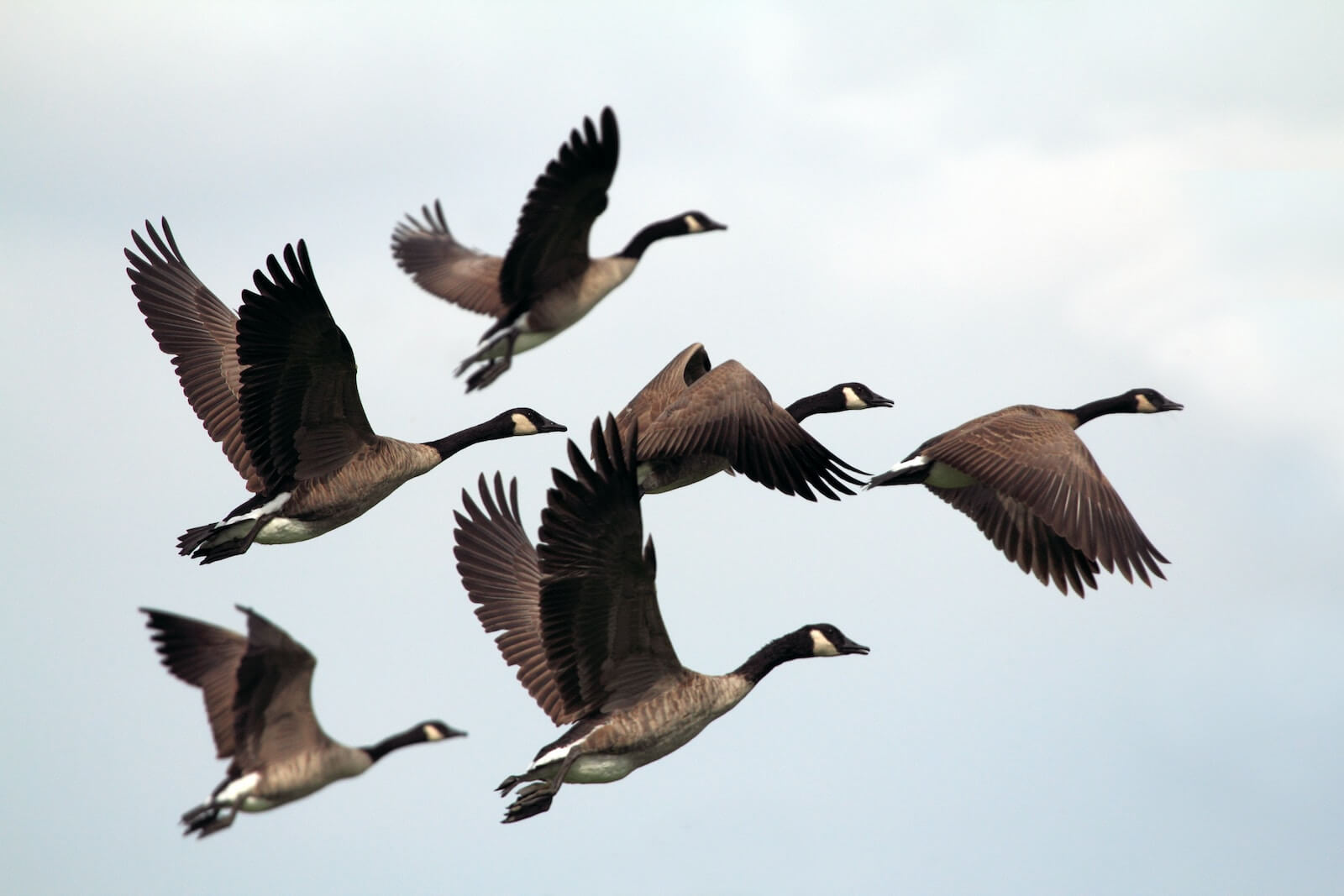NEW YORK — Have you ever watched a group of birds flying in a perfect V-shaped formation through the sky? They say, “Birds of a feather flock together,” but how the heck do they know how to do all this flocking and togetherness with such precision? Scientists have been studying this gift for collective motion, and they may finally have an answer.
Researchers at New York University gained new insights into the flow physics of flocking by using a unique experimental approach. They built robotic “mock flocks” of 3D-printed flapping wings. Their ingenious study, published in the journal Nature Communications, reveals the surprising dynamics that emerge from the interplay between individual wing motions and the air flows they generate.
At the heart of their experiments was a clever rig featuring up to five flapping wings connected to a central rotating shaft. This contraption mimics birds arranged in a line during flight. As the shaft flapped up and down, the individual wings were able to freely rotate and move in a circular path around a water tank, interacting only through the fluid flows their flapping produces.
What the researchers discovered upends some conventional thinking about bird formations. Initially, the robotic wings organized themselves into strikingly regular, crystalline structures spaced about one wavelength apart – the best position for a follower to “ride” the wave-like wake left by the wing ahead of it.
However, this tidy configuration concealed a natural instability. The experiments and simulations revealed the existence of coherent “flonon” waves spreading through the flock. These oscillating disturbances grew more amplified with every follower’s position down the line. Eventually, the flonons became so large that they triggered collisions, causing the orderly formation to disintegrate.

“If a flyer is displaced from its position, the vortices or swirls of flow left by the leading neighbor help to push the follower back into place and hold it there,” explains Leif Ristroph, the director of NYU’s Applied Mathematics Laboratory, in a university release. “This means the flyers can assemble into an orderly queue of regular spacing automatically and with no extra effort, since the physics does all the work.”
“For larger groups, however, these flow interactions cause later members to be jostled around and thrown out of position, typically causing a breakdown of the flock due to collisions among members. This means that the very long groups seen in some types of birds are not at all easy to form, and the later members likely have to constantly work to hold their positions and avoid crashing into their neighbors.”
There’s an upside to this, however, as the destabilizing resonance can be disrupted by introducing diversity across the flock. Inserting a “vacancy defect” into the pattern or varying the phases of the flapping motions was enough to quell the amplifying waves and promote longer-lasting formations.
“Compared to the identical-phase flock, groups with random phases tend to have lower fluctuations,” the researchers write in their study, noting that dissimilarities between each bird’s wingbeats may be crucial for sustaining stable flocks over long migrations.
So, why does this matter beyond satisfying scientific curiosity? An improved understanding of flock dynamics could eventually inspire new designs for coordinated groups of drones, underwater vehicles, or other swarms of robotic devices. It may even shed light on the potential advantages of flying in tight formations.
“Our work may also have applications in transportation—like efficient propulsion through air or water—and energy, such as more effectively harvesting power from wind, water currents, or waves,” adds Ristroph, an associate professor at New York University’s Courant Institute of Mathematical Sciences.



